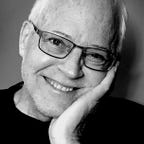Art of the Courtroom 3:
Let’s Be Brief
I continue to offer Counter Arts and Medium readers sketch art that I do in the federal trial, U.S. v. Thao, et al. with three former police officers (now defendants) under criminal scrutiny in a district court in downtown St. Paul (MN).
Last week the courthouse went on hiatus, after a two-day week. One defendant had been diagnosed with Covid. So Judge Magnuson sent the jury home on a Wednesday morning for the remainder of the week, a safe and smart move.
In my column for week 2, I mentioned how packed the courtroom seemed to me. That said, the jury has been encased by plex-partitions and everyone in court is required to be masked save when they testify. All one can assume is the spread of Covid remains unpredictable.
Meanwhile, there was the killing of Amir Locke in neighboring Minneapolis, a news item that was tragic and became of global interest. How it might affect the outcome of this trial may well stay hung in the air.
So, it seemed a good week to describe a creative brief, an interesting and necessary artist-client planning document.
Anatomy of a creative brief
The term “brief” is said to have originated with the military but it also sounds legal, and in part it is, as it is derived from — or leads to — contract or a letter of agreement between contractor and client. If you are running a creative business it is typically prepared by an artist or designer with a half dozen parts, as point forms such as:
● Context
● Audience
● Goal (denotations: facts, connotations: feelings, i.e., “look-feel”)
● Deliverables, ownership
● Timing
● Budget
A local affiliate had contacted me back in January about doing courtroom sketches for them. I never did offer them a formal brief in writing, rather I talked by phone with the rep and we covered four of the above point forms. Mainly we discussed the look/feel part of the goal — along with timing of delivery.
One thing clients want is work samples, so I provided them. It was easy for me as everything was on my Flickr portal.
A creative brief really should occur in art and design industries, often it is the very first task. If/when a creative brief is formally signed off, it serves to clarify matters that can morph into a good product or service. Stated another way, if its half-dozen issues are left unaddressed then barriers can arise, very quickly.
Over the years I had had exactly one contract with a media outlet, Bloomberg, a year ago. The paperwork — involving editorial, finance, and legal — was endless. I had forgotten about all the pdf documents demanded; they take time (I had not operated as a business since 2015.)
My “verbal creative brief” that addressed four key parts was ultimately declined. Requests to me from two other media outlets had also started with an email exchange but both parties declined to take a phone call from me, a sure path to a dead end. In the end I was not to be “in the bidness” of commercial court illustration.
I took a look at my courthouse ID badge, it read “freelance artist.” So I decided to become exactly that, but with an emphasis on the word “free.” I simply put my sketches in the public domain, with Creative Commons licensing, in keeping with one of the particular standards offered by Medium.
Week 3 results
One important lesson learned so far: Starting a sketch is easy, finishing it, not so much.
Continuing to be brief, my closer: more about context
I have been in the Burger courthouse every day of this trial, exactly four weeks now. It’s not easy on all fronts, but I love it. The presiding judge, Hon. Paul Magnuson, turned 85 this week. He might’ve chosen to retire long ago, his daily effort then perhaps doing a crossword puzzle, fish, whatever. I asked myself, “Could I stay as active and quick-minded as does this gent if I was, like him, a decade and half older?”
Acknowledgement: Editing assistance courtesy Kathy Heuer. Errors that might remain are mine and mine alone.
J. Kevin Byrne (MA/Minnesota, MFA/Cranbrook, MSc-Cert./Saint Mary’s) is Professor (now Emeritus) at the Minneapolis College of Art and Design (MN/USA). He has published in print and continues to do so online. Feel free to Link-in to him here.
